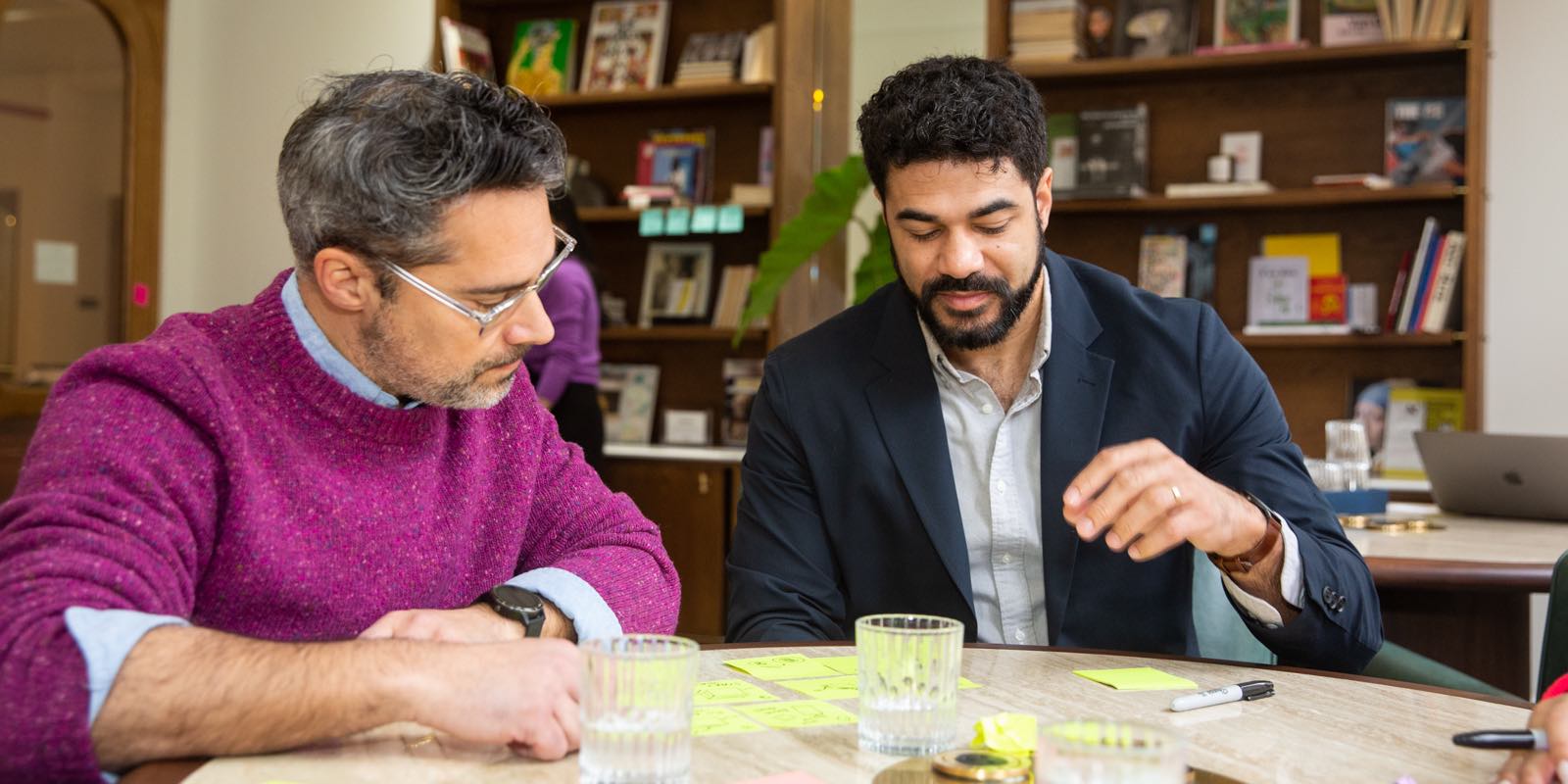Published March 28, 2023 | Updated March 28, 2023 | 5 minute read
Decisions are foundational to an organization’s success.
But to me, the decision itself is far less interesting than how that decision gets made.
As organizational leaders, we’re good at figuring out what to do before a decision gets made. We invent all kinds of systems and acronyms (RACI and DACI and RAPID, oh my! 😩) for divvying up responsibility, credit and blame.
And we have plenty to say about the period after a decision is made: how to roll it out, train people up, communicate the shift, measure its effectiveness.
But all these efforts fail to account for the decision-making moment itself.
In the absence of a clear model, most of us default to one of two extremes: Consensus, where everyone has to agree before a decision can move forward, or Individual Action, where one person carries all the power, for better or worse.
These default decision-making models carry a lot of dysfunctions. Consensus is slow, arduous and easily hijacked, while Individual Action consolidates power with someone who may or may not be the best equipped to make a quality choice.
But we don’t have to be limited to just 2 options. There’s a spectrum of alternative decision-making models between these two extremes.

In this blog I’ll outline the pros and cons of each decision-making model, and how to choose the best one for the needs of a given decision.
For a more detailed analysis of the decision-making spectrum, I highly recommend you check out our free whitepaper: Decision Making Can Be a Lever for Organizational Change.
Individual Action: For Faster, Lower-Quality Decisions
Individual Action is a decision-making process where a single person decides with little – if any – input from others. The process has only two steps:
- Make a decision
- Inform everyone
Individual Action is the polar opposite of Consensus. It concentrates power and minimizes inclusion. I think of it as a “last resort” decision-making model, suitable only for crisis moments when speed matters more than quality or inclusion.
Use Individual Action sparingly. It often causes dysfunction and isn’t suitable for most decisions.
Advice: For Urgent or Discrete Decisions
 Advice is a more inclusive and empowering alternative to Individual Action. It’s designed for speed, but makes more room to hear different points of view.
Advice is a more inclusive and empowering alternative to Individual Action. It’s designed for speed, but makes more room to hear different points of view.
The process looks similar to Individual Action. But the Advice model adds two additional steps:
- Make a proposal
- Collect advice from relevant stakeholders
- Make a decision
- Inform everyone
During the Advice round, the decision owner answers stakeholders’ questions and listens to their feedback. She’s still fully empowered to make the decision as she sees fit, but the participants can also trust that their perspectives were heard and considered.
Advice is a great model for leaders who want to make their Individual Action process more inclusive without changing it altogether. It’s also a great tool for distributing decision power down the org chart towards the people with the most expertise on the decision itself.
Use Advice for clearly delineated decisions that can be safely delegated to individuals, and for urgent or unforeseen decisions requiring rapid response.
Consent: For Complex, Challenging Decisions
Consent is a decision-making model that deliberately includes the perspectives of all key stakeholders, even the dissenting ones, while giving clear authority to a single decision owner.
It’s a more streamlined alternative to Consensus, and is more inclusive as well!
The Consent process takes all the steps of Advice and adds one more step in the middle:
- Make a proposal
- Collect advice from relevant stakeholders
- Safe to Try
- Make a decision
- Inform everyone
Safe to Try is the operative phrase of the Consent model. It comes after the Advice phase and before the decision is made, and it’s essentially an opportunity for stakeholders to veto the decision if they have a valid objection.
The bar for a valid objection is high. Doubts, concerns, questions and alternatives won’t clear it. For an objection to be considered valid, it must be rooted in real data or information that the proposal will cause immediate and irreparable harm.
That’s not to say that there’s no room for dissent in the Consent model. Stakeholders are invited to voice any and all concerns, which are heard and addressed – but unless there’s a valid objection, the decision is by default considered “safe to try.”
In this way, Consent prioritizes progress over perfection.
Use Consent for complex decisions that require multiple perspectives, or for situations where you need to move quickly on a challenging problem.
Consensus: For Decisions Requiring Unanimity

In Consensus, decisions are made by a group of people only when they all agree. This is often the primary mode of decision making, especially in organizations that value “making everyone feel included.”
But Consensus is far from inclusive. In fact, it often excludes people because of its lack of structure.
Consensus processes often default into invisible power dynamics. People with less privilege and power will self-silence, while people with more will speak up.
Both groups will do so for the “greater good,” to minimize obstacles and keep things moving. But this reinforces existing inequities, and makes it difficult to surface the most relevant perspectives.
Consensus is only useful for those rare decisions that are large, complex, and require unanimous buy-in. Use with caution.
Conclusion: How you make a decision matters even more than what the decision is.
Choosing an intentional decision-making model leads to better, faster, more inclusive decisions.
Your decision-making model will clarify power structures, and let people know when and how to make a contribution. This will relieve pressure and increase creativity and psychological safety.
It will improve inclusion and equity by giving diverse stakeholders the room to fully express their perspectives, without holding up the process.
It will streamline the process by prioritizing progress over perfection, and creating space for ideas to be efficiently proposed and tested instead of getting stuck in a hamster wheel of what-ifs.
To make high-quality decisions in an inclusive way, be intentional about your decision-making process.
For more details on these methods, plus step-by-step tutorials and use cases, download our free report: Decision Making Can Be a Lever for Organizational Change.










